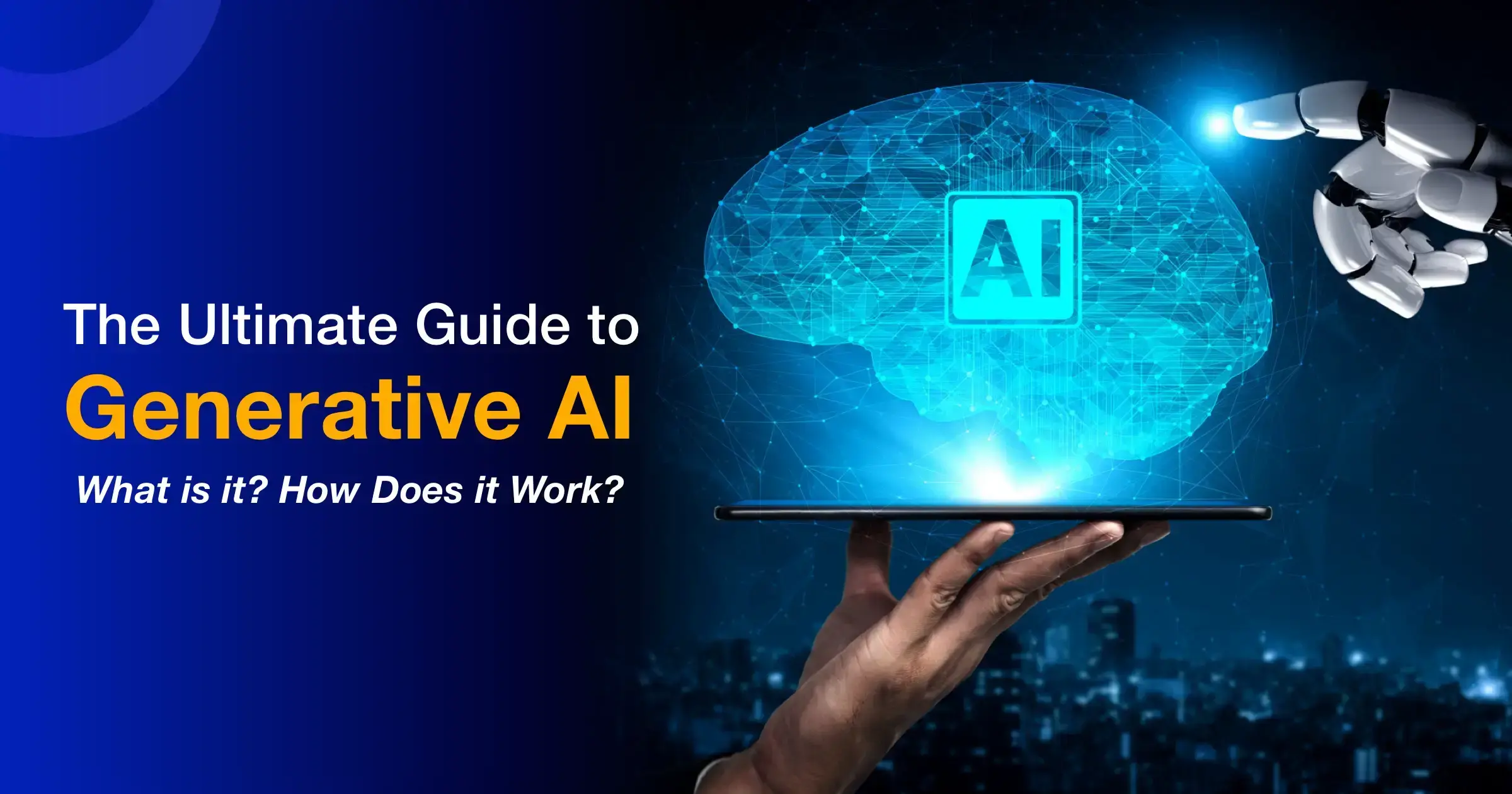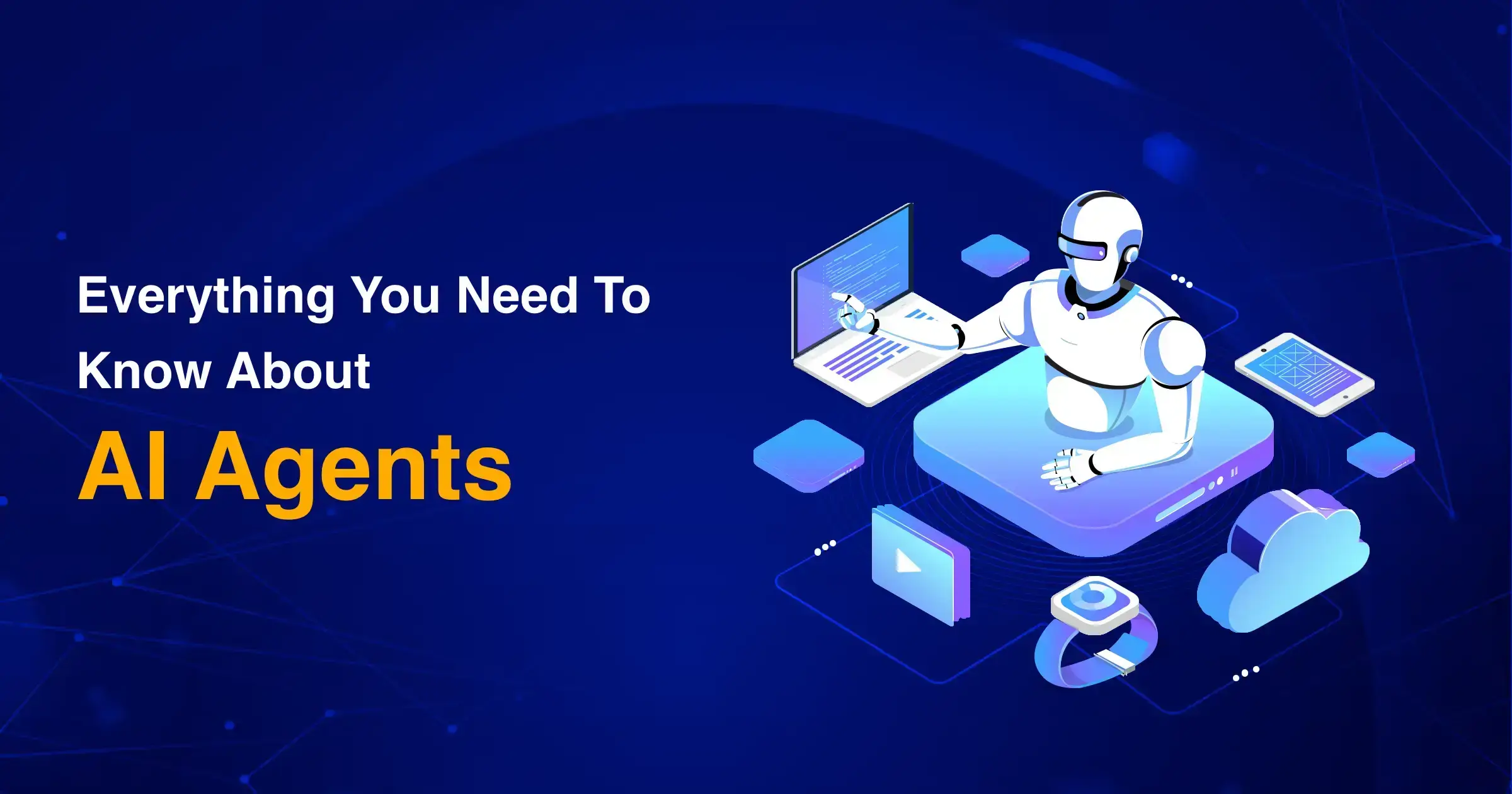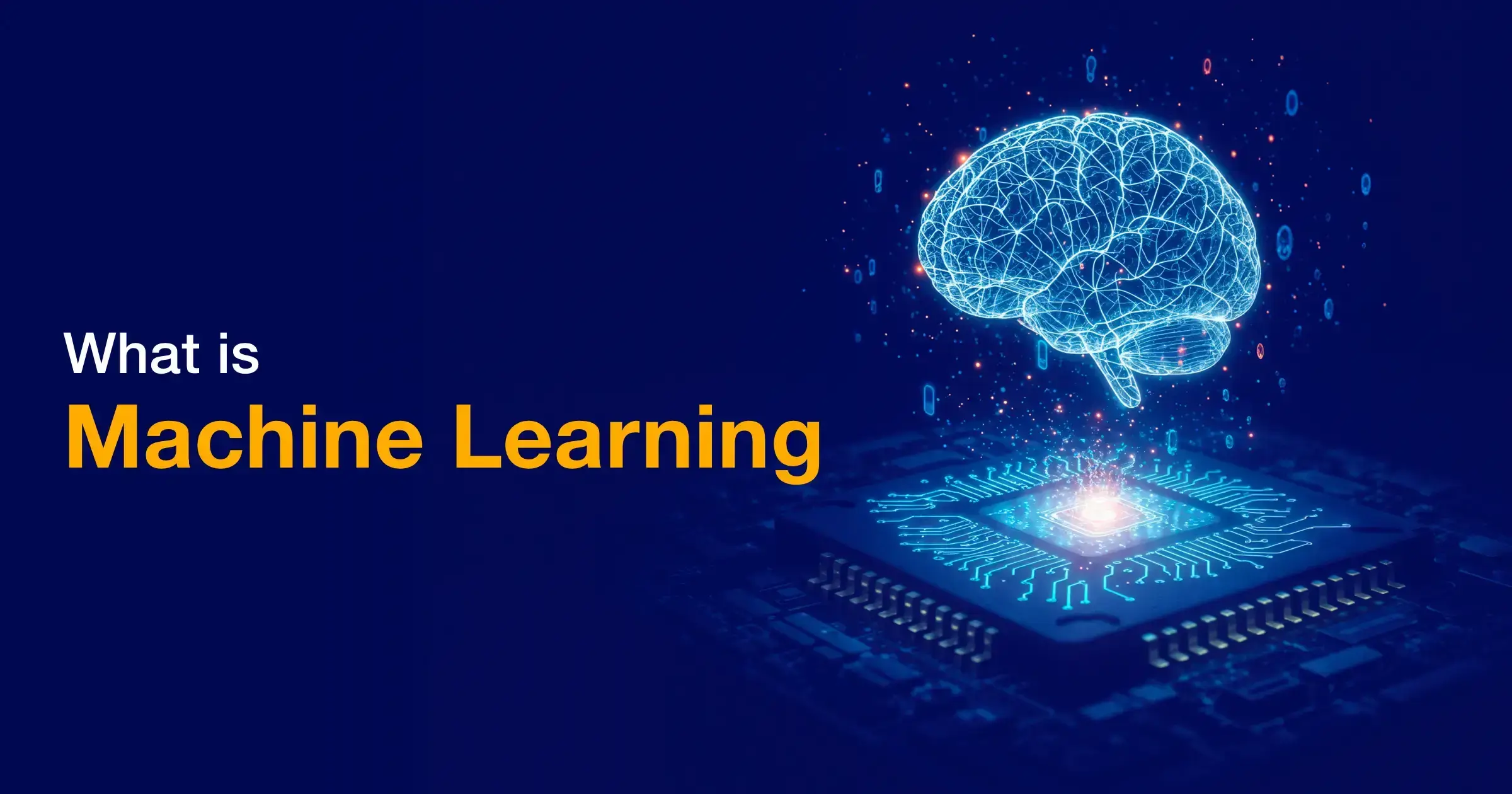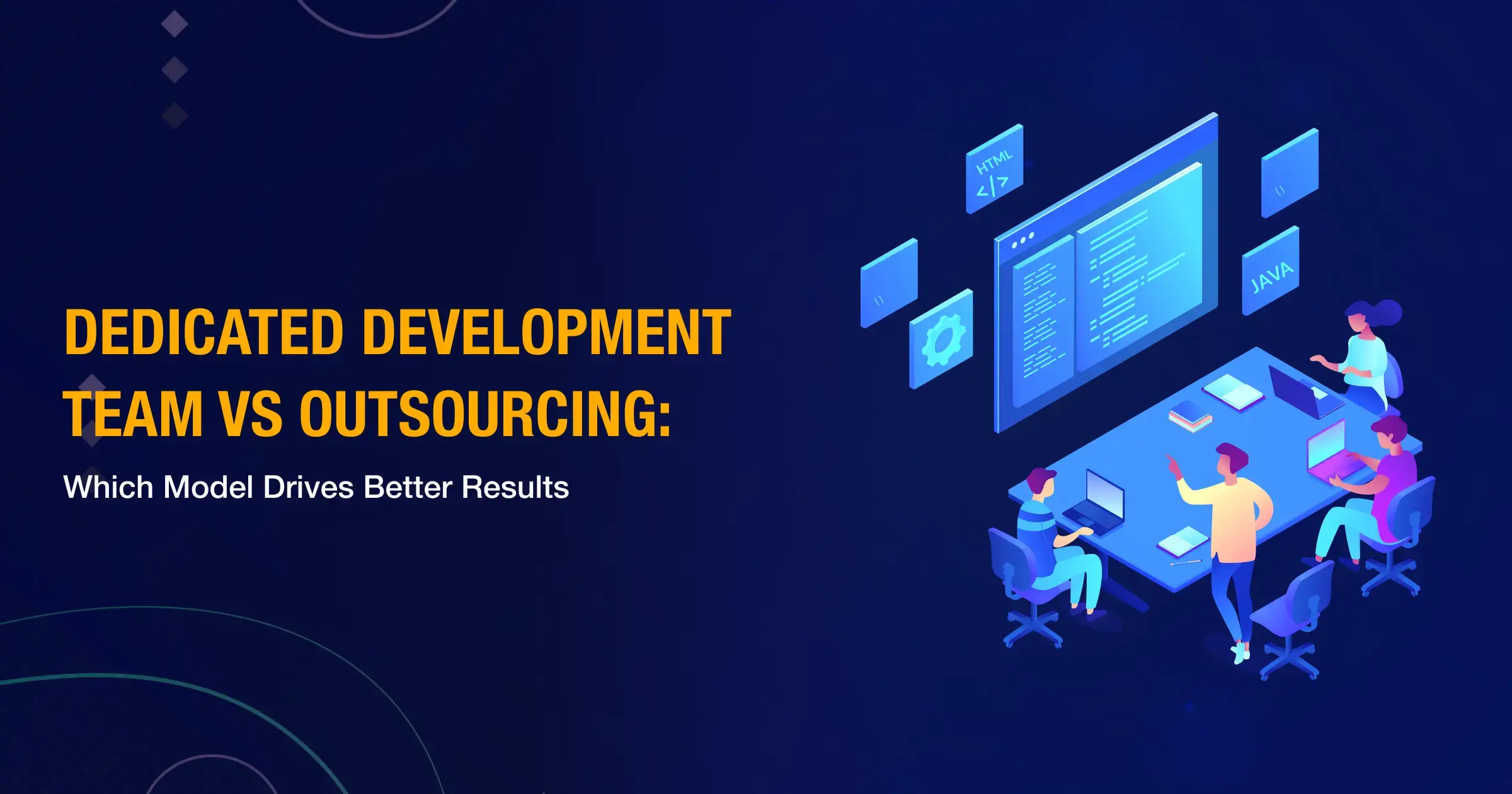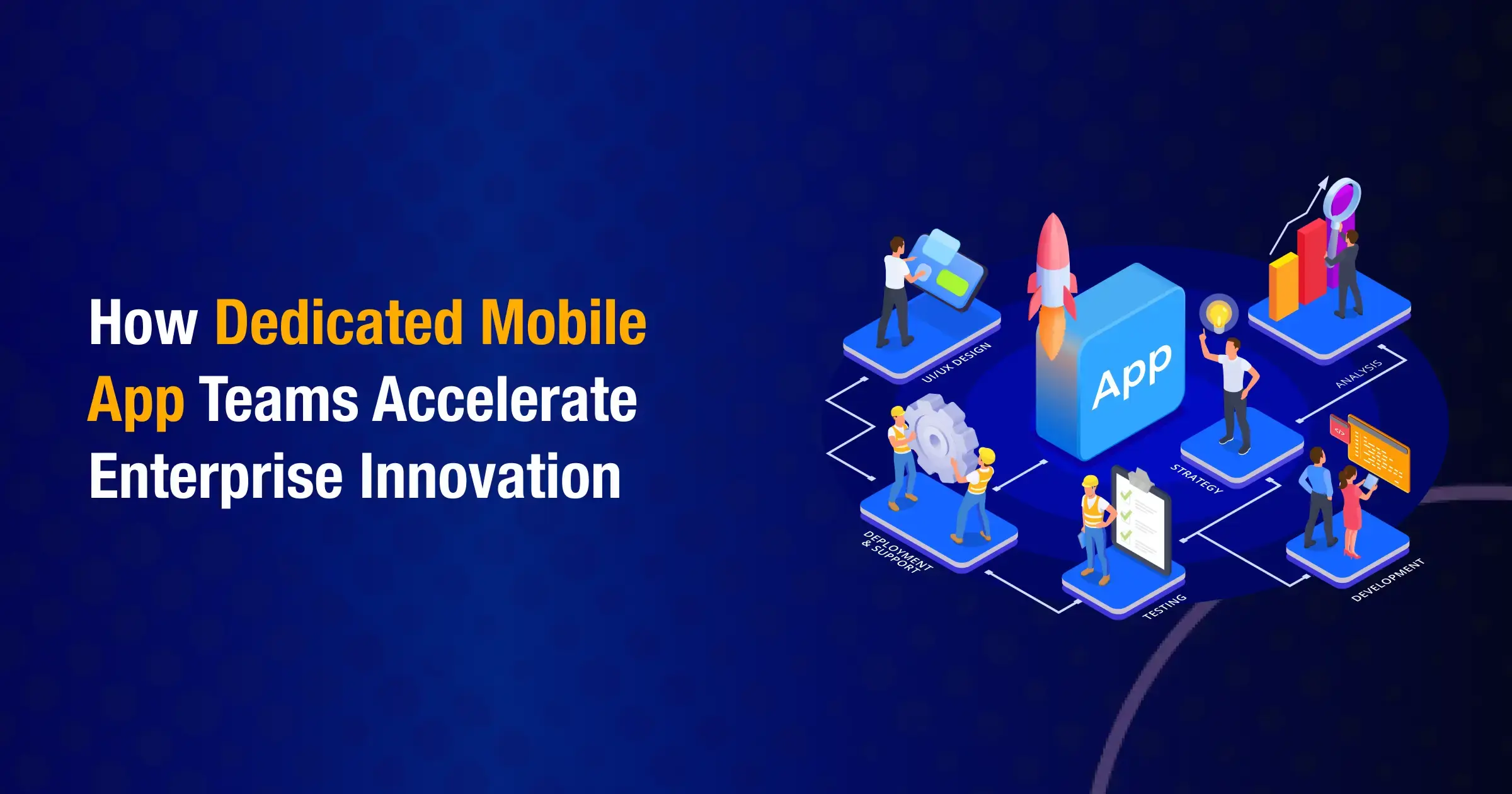
Generative Artificial Intelligence, also called generative AI or Gen AI, refers to a set of algorithms that are capable of creating new content, including texts, images, audios, and videos.
Since the inception of ChatGPT back in 2022, a widely popular AI model, Gen AI has exceptionally changed and evolved. Frequent addition and fine tuning of features, updates, and upgrades have drastically changed the way we usually approach content creation.
Let us uncover what is generative AI exactly, how generative AI works, and how it reshapes the field of content creation as we know it.
What is Generative AI?
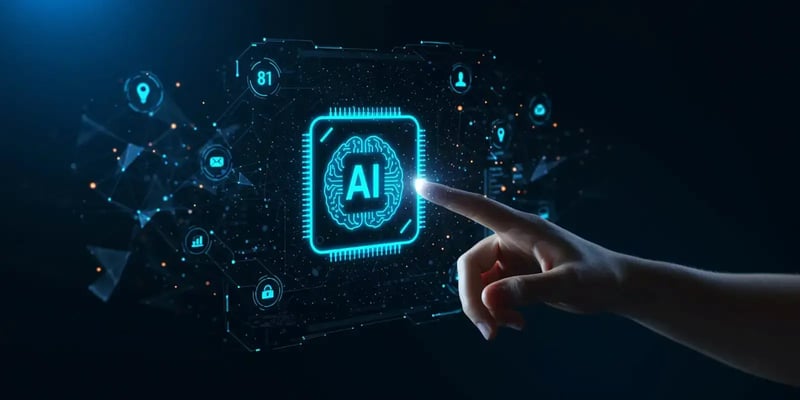
Generative AI is a branch of artificial intelligence and essentially deep learning models that can create original content like text, images, audio, video, and even software code. From just a detailed enough prompt (input and a set of instructions) you can get the desired results in the format that you want.
To do that, Gen AI relies on machine learning and deep learning models algorithms, which help it simulate the complex decision-making and learning processes of human brain.
Typically, Gen AI models are undergone exhaustive training on huge data sets containing vast amounts of information. You can think of it as the most intelligent and knowledgeable individual entity.
So, when you feed the instructions to it through a prompt, it analyzes your request, goes through trillions of data sets in less than a second, finds patterns and relationships within data, and gives response in the form of texts, videos, codes, or audios.
AI has been around for quite a while, let’s say even for decades, and witnessed periodic buzz and all. However, with the coming of ChatGPT, the hype of generative AI has tremendously increased and its grip is getting even more stronger.
Text and image generation tools like ChatGPT and DALL-E, respectively, have evolved from niche experiments to mainstream tools in record time. And the numbers back this up. According to a recent McKinsey report, around 92% of businesses are planning to invest in Gen AI over the next three years. The numbers show the growing popularity as well as growing dependency on generative AI by businesses for increasing the efficiency of various operations.
So, how does Gen AI actually work? To put it plainly, generative AI models take in some kind of input. It could be a few words of text, a photo, an audio clip, or even a sketch.
Based on your input, the model generates entirely a new output in your desired format. The outputs can be incredibly diverse from articles and marketing copy to videos, audio tracks, and even software code.
Having said that, the true potential of Gen AI goes way beyond that. Companies are now relying on generative AI to brainstorm software ideas to come up with completely new versions, develop new drug molecules, create synthetic datasets that protect privacy, and even train AI systems that are more robust and fair.
How Generative AI Works
As we have already known, generative AI is well versed with content creation and even AI-powered software development, but how does it actually do that? Let us analyze its way of working.
It All Starts with Neural Networks
Generative AI essentially uses neural networks to analyze and identify patterns within data and uses them to come up with entirely new idea. Now an important question may arise – what are neural networks?
Neural network (NN) in the context of AI is also called artificial neural network (ANN). Neural networks are nothing but a replica of human brain and biological neural networks inside the brain.
It consists of nodes, connecting points in the network that loosely resemble biological neurons, and edges, the artificial model of synapses in the brain.
Although reaching the perfection and complexity of a biological neural network is still a colossal challenge, artificial neural networks, to some extent, mimics the working of the brain.
Anyway, these networks spot patterns and relationships within large data sets, learn from the patterns, and generate new things based on users’ prompts.
One important thing to remember here is that Gen AI doesn’t refer to existing data, mix and match them, and give new information, but it generates things that are new and original.
The Power of Foundation Models
The evolution of foundation models is by far considered as one of the significant breakthroughs in generative AI. What are they anyway? They are large deep learning models trained on massive piles of data, which use a mix of unsupervised and semi-supervised learning. What does it mean? It means you are relieved from meticulously labeling data because these models can just dig through them just by observing.
Examples?
- GPT-3 (which powers ChatGPT) → turns text prompts into essays, stories, or answers.
- Stable Diffusion → transforms text prompts into photo-realistic images.
These foundation models that are once trained, can be fine-tuned for all sorts of specialized jobs, be it chatbots or video creators.
The Three Phases: Training, Tuning, and Generation
Let’s walk through how this all works behind the scenes.
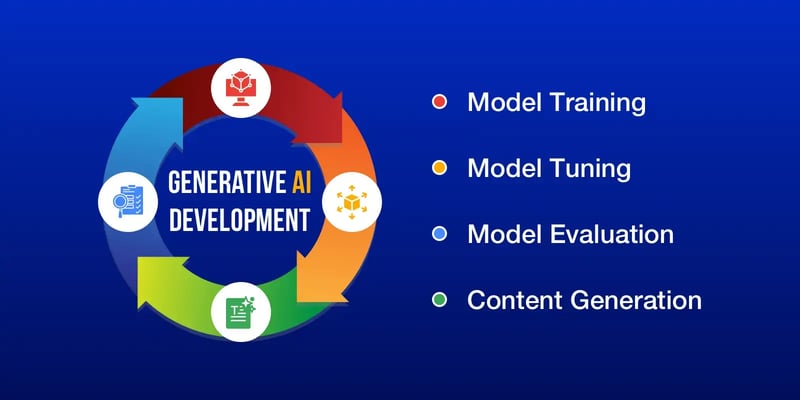
Phase 1: Training
Training is where it all begins. Developers feed the model huge volumes of raw, unlabeled data, which includes terabytes of data pulled from websites, books, code repositories, and many more. The model plays a kind of giant guessing game, trying to predict the next word, image element, or code snippet, and constantly adjusting itself to get better.
By the end, the model builds a vast network of parameters (these are like internal dials or settings) that capture the relationships in the data by implementing thorough data analytics. That’s how it can later generate content on demand.
Heads-up: training is insanely compute-intensive. We’re talking thousands of GPUs running for weeks and millions of dollars in cloud costs. That’s why open-source models like Meta’s Llama-2 are such a big deal mainly because they let developers skip the expensive first step.
Phase 2: Tuning
Once you’ve got your foundation model, it is a bit of a generalist, which means, it has a general idea about everything but not specialized in anything. That’s where tuning comes in.
- Fine-tuning → Feed the model labeled, task-specific data. For example, if you want a customer support chatbot, you’d train it with thousands of real customer questions and best-practice responses.
- Reinforcement Learning with Human Feedback (RLHF) → Humans help guide the model by ranking, scoring, or correcting its outputs. So, if the AI gives a clunky answer, a human points it out, and the system learns from that.
Tuning is where the model gets sharper, more accurate, and more aligned to a specific use case.
Phase 3: Generation, Evaluation, and Retuning
Once tuned, the model goes live and starts generating content. But here’s the kicker: the process doesn’t stop there.
Teams constantly evaluate the outputs to see what’s working and what’s off. And they retune the model to improve accuracy and overall quality.
However, there is one more tool called Retrieval-Augmented Generation (RAG). This clever framework connects the model to external and up-to-date sources like databases or live web content, which helps Gen AI generate more current and accurate responses. While doing so, it even shows sources by becoming more transparent.
The Future Is Multimodal
As most of us tend to associate generative AI with text generating tools like ChatGPT or images generating ones like Dall-E, the future, however, is multimodal, thanks to the evolving computer vision and other technologies. That means models that can handle text, images, video, sound, and even 3D data all at once. We are moving toward AI systems that can jump between different types of content seamlessly, opening up mind-blowing creative and business possibilities.
What Kinds of Outputs Can Generative AI Create?
Generative AI can create the following types of outputs:
- Text
- Image
- Video
- Audio
- Programming Codes
- Designs
- Synthetic Data
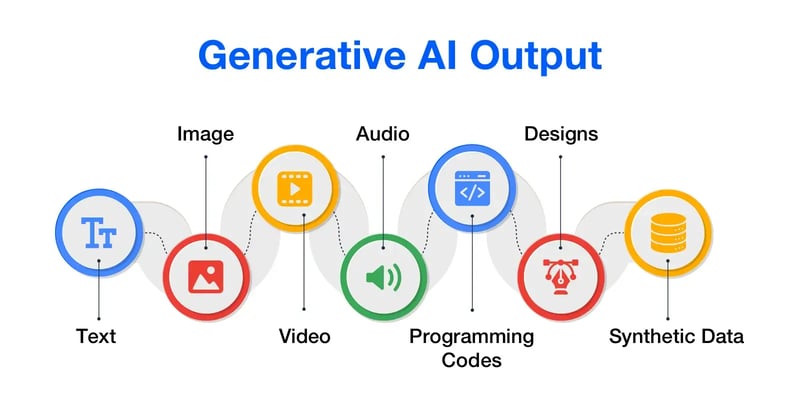
Initially famed for generating original contents, generative AI companies are constantly upgrading Gen AI features and setting the bar high with every new updates. From generating blogs and research articles to creating stellar visuals, not to mention the recent hype with Studio Ghibli styled image generation, generative AI produces different forms of outputs.
1. Text Generation
Generative AI models, particularly those based on transformer architectures like GPT-4, are good at generating text output which are new and original. These models can generate a wide range of textual content, be it articles, reports, summaries, or creative pieces like poems or short stories. Powered by large language models (LLMs), it can seamlessly produce text-based outputs, be it summaries or legal contracts or help with intelligent document processing.
- Automation of Writing Tasks: AI can draft emails, generate reports, and create content outlines, streamlining workflows.
- Content Personalization: Tailors messages to specific audiences, enhancing engagement.
- Language Translation: Facilitates real-time translation, breaking down language barriers.
2. Image and Video Creation
There are some standalone image generating Gen AI tools available, some of which are DALL-E, Midjourney, and Stable Diffusion. However, multimodal Gen AI models have risen, which have integrated image generating features. They have made significant strides in generating high-quality images and videos from textual prompts. These models can produce realistic visuals and even animations.
- Design Prototyping: Quickly visualizes concepts for products or marketing materials.
- Content Generation: Creates visuals for social media, advertisements, and educational materials.
- Entertainment Industry: Assists in storyboarding and visual effects creation.
3. Audio and Music Synthesis
Generative AI is capable of producing speech audio with natural sounds of a human and also helps with original music compositions. Models like Jukebox and tools from ElevenLabs are help with this innovation, which provides space for creators to brainstorm new ideas.
- Voice Cloning: Replicates voices for virtual assistants or dubbing.
- Music Composition: Generates background scores or complete songs in various genres.
- Audiobook Narration: Automates the narration process, reducing production time.
4. Code Generation
This is one of the critical areas where Gen AI has significant impact on. Generative AI models such as Codex can write original codes, debug them, and even optimize them across multiple programming languages. With this elaborate generative AI services in coding, software development process has been expedited and refined without manual coding errors.
- Code Autocompletion: Suggests code snippets, enhancing developer efficiency.
- Bug Detection: Identifies and rectifies errors in codebases.
- Language Translation: Converts code from one programming language to another.
5. Design and Art Generation
Artists and designers can use generative AI models to come up with new, create artworks and design elements. Instead of replacing the original creativity of artists, Gen AI augments their creative ideas by letting them brainstorm and produce enhanced art and designs. In many cases, the output generated by such AI models acts as inspiration to artists and designers.
- Graphic Design: Generates logos, layouts, and branding materials.
- Fashion Design: Assists in creating patterns and clothing designs.
- Architectural Concepts: Visualizes building designs and interior layouts.
6. Synthetic Data Generation
Generative AI models excel at generating fully or partially synthetic data by replicating real data sets. This comes highly helpful for various use cases. For instance, AI-generated synthetic data is used in drug discovery like artificial health records that speeds up the process.
Synthetic data is particularly useful to train machine learning models without compromising privacy.
- Healthcare Data: Generates patient data for research while preserving confidentiality.
- Financial Modeling: Creates market scenarios for risk assessment.
- Autonomous Vehicles: Simulates driving conditions for training self-driving algorithms.
What are the Benefits of Generative AI
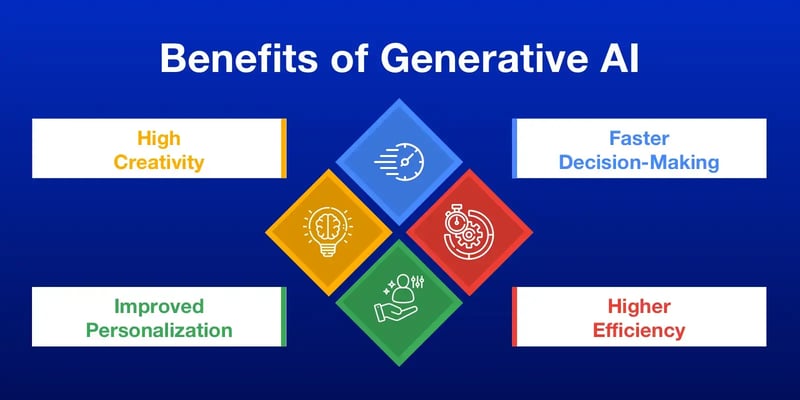
A significant benefit of generative AI is that it encourages enhanced creativity and efficiency. Having trained on vast data sets, it can seamlessly analyze data and find patterns within it, which are obscure from human observation.
Using such highest intelligence, generative AI creates output that nearly mimics human works and sometimes even surpasses human creativity.
Increased Creativity
Against the common misconception, generative AI is not a competition to human artists and professionals, but rather a creative partner. With its unique outputs, Gen AI pushes humans beyond boundaries, persuades them to think outside the box by exploring new perspectives created by it.
Let’s say you are writing an engaging blog and stuck midway without having a clue on how to go about with it. In such a case, generative AI helps you clear the roadblock by generating new ideas from which you can create your own version.
In other words, generative AI creates a conducive environment for humans and AI to collaborate and produce better outputs.
Improved Personalization
Generative AI creates a level-playing field for big brands and small businesses and startups. With its functionalities and abilities, you can offer highly personalized experiences to your users and customers.
Its ability to uncover hidden patterns within data helps you learn about user interactions on website or mobile app, their past interaction history, and other data. Using this, you can tailor marketing campaigns that precisely target your audience segment, recommend products purely based on individual interests, adaptive learning platforms, and many more.
What do you get in return? An increased brand awareness, improved trust, and better business outcomes.
Faster Decision-Making
Generative AI is an expert when it comes to analyze huge datasets, be it structured or unstructured. It digs into the data and finds patterns and relationships within data that we humans cannot witness.
It doesn’t stop there. Gen AI presents its findings in dashboards that are conceivable by humans, in the forms of reports, graphs, and charts. To take it a step further, generative AI can also suggest actionable recommendations unique to the situation.
Companies that make decisions backed by strong data and not mainly by intuition have higher chances of becoming successful and can achieve desired results.
Boosting Efficiency
By leveraging generative AI, you will be able to improve efficiency, which is an obvious benefit. What previously took hours to complete can now be finished within minutes using Gen AI, all the while without compromising the quality of output.
It even facilitates you to automate some routine, day-to-day tasks, which lets you and your team focus on core business activities and indulge in critical aspects of your business.
What Are the Challenges of Generative AI?
There is a huge potential in generative AI, but like any emerging technology, it comes with its own set of challenges. If we have a better understanding about its challenges and shortcomings, we can better equip ourselves to address them.
Scale of Compute Infrastructure
Generative AI models are massive. It contains billions of parameters that need to be trained on enormous datasets, which may require huge quantity of examples.
Businesses need to invest heavily on infrastructure, technical expertise, and data pipelines to make it work.
If you are planning to build a text-generating AI model, you need to feed millions, if not billions, of data to train it. The process itself demands huge networks of GPUs working 24/7.
Sampling Speed
Having an innovative technology producing impeccable results is one thing. Making them work efficiently, particularly with unmatched speed is the other. Speed is a crucial element that directly impacts efficiency.
This is highly critical when it comes to providing a smooth customer experience. Due to its large scale, generative AI models may present some form of latency as it might take time to process the information and generate responses.
It poses a serious challenge in areas like customer service and voice assistants as nobody wants to wait several seconds for getting a response.
Lack of High-Quality Data
There is virtually no limit to the availability of data, but not all of them are suitable for training AI models. High quality data is essential for Gen AI to train effectively, which is ensured by robust data mining services and data annotation services.
It comes with even greater challenges in some domains, for example, 3D asset generation, where it might be costly to develop datasets.
Data Licensing and Access
On top of the data quality issue, there’s the data licensing headache. Even when good datasets exist, getting the right to use them is tough.
Companies need to buy commercial licenses or build their own bespoke datasets, both of which take time, money and legal oversight. Without this, companies risk running into IP issues which can lead to reputational damage or legal trouble down the line.
Bias and Misinformation
One of the biggest challenges with generative AI is that the outputs can sound so convincing even when they’re wrong.
Since these models are trained on massive amounts of internet data, they can reflect or amplify biases around gender, race or other sensitive topics. Worse, they can be manipulated to generate harmful or unethical content.
For example, a model might refuse a harmful request outright, but with the right prompt engineering a user could bypass safeguards. This is a big problem for any organization using generative AI as it opens up reputational, legal and ethical risks.
Humans in the Loop
Because of these risks, we need to keep a human in the loop. That means no matter how good a generative model is, a human needs to review and vet the output before it’s published or used.
This is especially important for sensitive use cases or decisions around health, safety or large sums of money. Without this safeguard, companies could end up deploying biased, offensive or simply inaccurate content.
Rapidly Changing Landscape
Perhaps the most important thing to remember is that generative AI is moving fast. New models, tools and use cases are emerging every month.
Regulatory frameworks are still being defined and we’re just starting to understand the full scope of the risks and opportunities.
For companies adopting generative AI, they should stay on top of changing regulations, public opinion and industry best practice. Decision-makers need to keep their eyes on the horizon and be ready to adapt as the landscape changes.
The Way Ahead
Generative AI is clearly steering various aspects of businesses from generating content to aiding data-backed decision-making. With multimodal AI models on the rise, Gen AI becomes more user-friendly by integrating several features into a single model and even produce a unified output.
With that being said, you should also be mindful about its limitations and challenges that this model poses.
Generative artificial intelligence clearly has numerous possibilities for growing businesses and encourages a collaborative environment between different departments and stakeholders within an organization.
With comprehensive AI integration services offered by many service providers, you will be able to adopt generative AI to your workflows, with which you can automate tasks, enhance innovation, and improve the overall efficiency of your operations.

